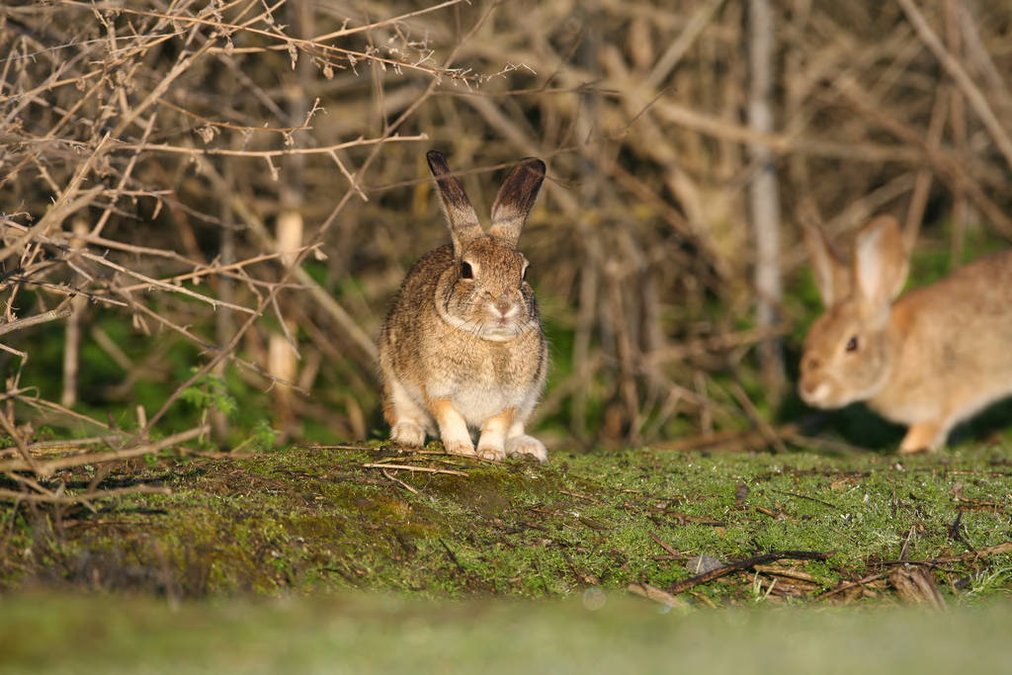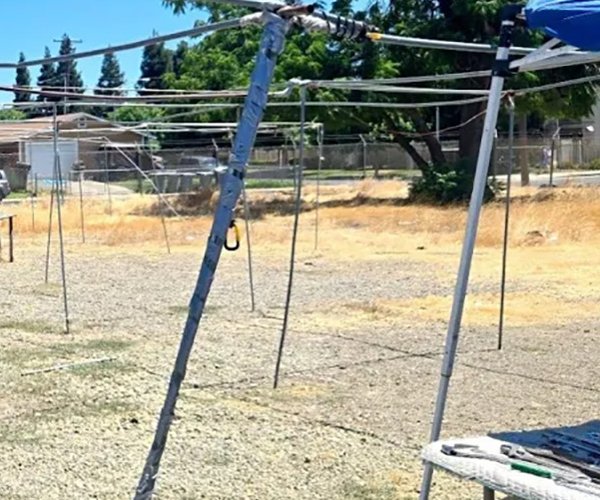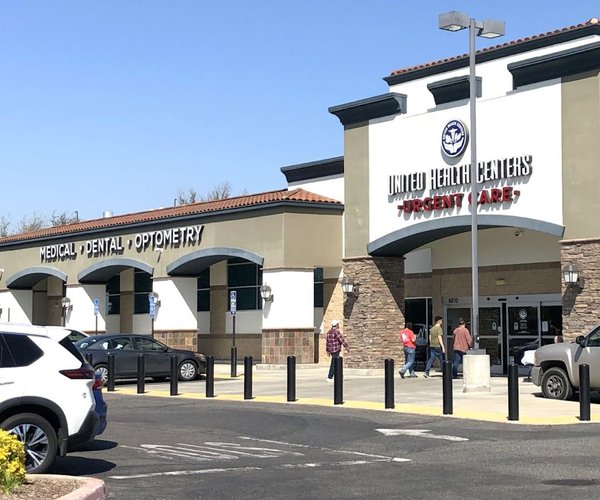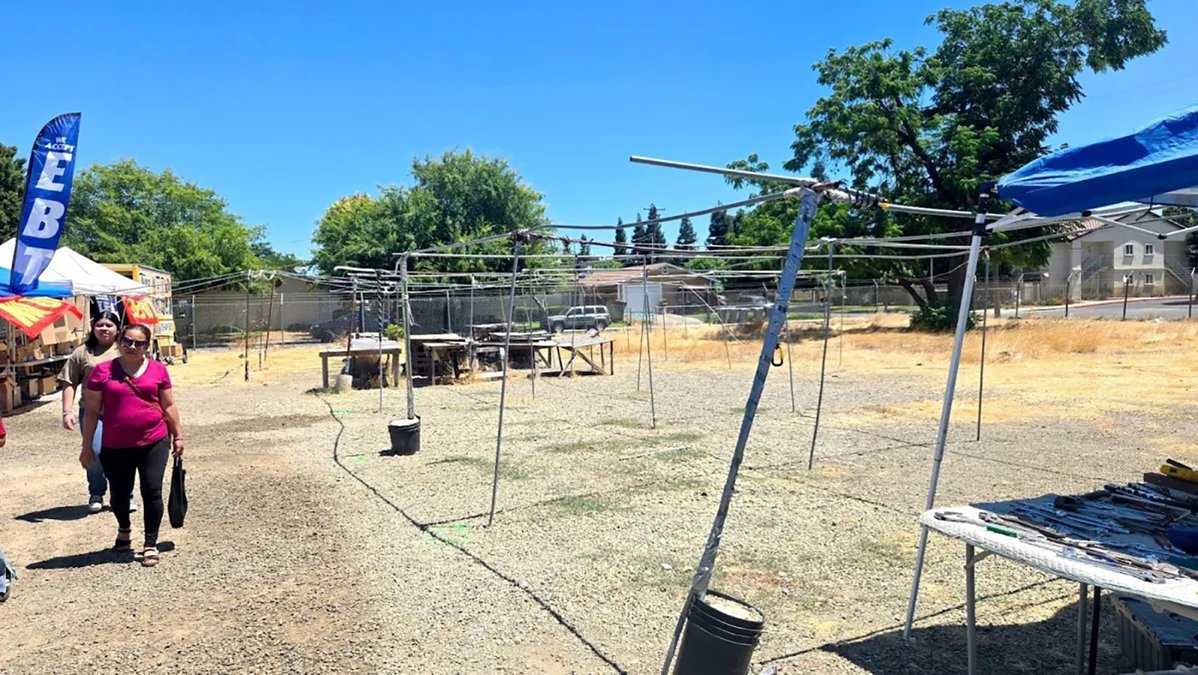BY CAL ROBINSON
US Fish & Wildlife Service
January's record-breaking rainstorms left endangered riparian Riparian
Definition of riparian habitat or riparian areas.
Learn more about riparianbrush rabbits in a lurch when water poured over levees on the U.S. Fish and Wildlife Service’s San Joaquin River National Wildlife Refuge.
Knowing the rabbits would be getting corralled into small islands of high ground by the floodwaters, Refuge staff jumped into action.
“Our biologists at the Refuge Complex quickly began trapping and rescuing riparian brush rabbits,” said Fumika Takahashi, wildlife biologist at the San Luis National Wildlife Refuge Complex, which includes the San Joaquin River National Wildlife Refuge. "We had to be very careful about preventing the spread of rabbit hemorrhagic disease, which is highly contagious to rabbits.”
The effort ended up rescuing 103 riparian brush rabbits in the national wildlife refuge that is located on the westside of Stanislaus County along the San Joaquin River.
Rabbit hemorrhagic disease was detected on San Joaquin River National Wildlife Refuge in 2022 after two years of vaccination efforts by Refuge staff and partners in the riparian brush rabbit working group. Vaccinating the rabbits is one of the most important actions the Service and its partners can take to support the rabbit’s recovery.
For January's flood rescues, administering the life-saving vaccination immediately became a part of the plan.
“Our crew of biologists, along with the refuge manager and other staff, worked long and challenging hours,” said Takahashi. “We successfully rescued, vaccinated and tagged 103 rabbits and moved them to higher ground on the refuge.”
While January's rain events were particularly severe, it was not the first time San Joaquin River has flooded the refuge.
“The last time the Refuge flooded was in 2017. It's definitely a growing concern with climate change because we're seeing more long periods of drought followed by high rains and flash floods,” said Maggie Sepulveda, senior fish and wildlife biologist in Sacramento Fish and Wildlife Office's San Joaquin Valley Division.
In the past, when the San Joaquin River flooded, the rabbits were able to easily retreat to upland areas. With the modern levee system around the river, those paths to the uplands have been lost and the flooding is now more confined to where the rabbits live. The San Joaquin River National Wildlife Refuge is working to restore the river’s floodplains and provide more upland habitat for the rabbits to retreat to in times of flooding.
“Riparian brush rabbits are especially vulnerable to floods because they live at the edges of rivers,” said Eric Hopson, refuge manager at San Joaquin River National Wildlife Refuge. “They only live in a small area and there aren’t many of them, so events like this can have a big impact on their population and recovery.”
To help the subspecies survive future floods, the riparian brush rabbit working group is working to establish a satellite population of rabbits at San Luis National Wildlife Refuge, where the habitat is more flood resilient.
“There are several strategies we’re working on to help the riparian brush rabbit recover,” added Sepulveda. “The Service is working alongside so many passionate partners who are determined to protect the future of this species.”
Riparian brush rabbits are an endangered subspecies found only along waterways in Southern San Joaquin County and Western Stanislaus County.
The 1997 floods that inundated 70 square miles of the Central Valley reduced known numbers at the time down to somewhere between 200 and 300.
The loss was particularly devastating at Caswell State Park on the Stanislaus River. It was there in the largest last remaining stand of natural riparian woodlands that many brush rabbits perished.
A year after the flood only one of the rabbits that resembles the desert cottontail but is smaller with a darker, grassy brown coat minus a black tip on the ear as well as having a smaller and a less conspicuous tail was spotted at Caswell State Park. As an adult reach 11 to 14 in length and weigh between 1 and 1.8 pounds and
Efforts to bring back the rabbits were initially focused mainly in the San Joaquin National Wildfire Refuge just across the river form Caswell State Park.
The rabbits rarely stray more than several feet from where they burrow as well as find shelter and food among wild rose bushes, wild grapevines, as well as blackberry and similar vegetation. While green clover is their favorite food they also feast on grass, bark, vines, leaves, and other plants.
The reintroduction of rabbits from captive breeding programs have helped push estimated numbers in the wild from 200 to 300 three decades ago to more than 3,000 today.
Thirty years ago, the brush rabbit’s range that once was believed to have been farther south along the San Joaquin River and boasted a population in excess of 110,000 was limited to South San Joaquin County. Their range now includes part of Stanislaus County.
While the brush rabbits are prolific between January and May with females being able to have up to four litters a year and giving birth to three or four young rabbits in each litter, the survival rate for those born in the wild are 1 in 6.
Although they have plenty of natural predators in the wild, feral cats are believed to be the deadliest foes when it comes to their survival.
And while brush rabbits that are one of eight rabbit sub-species unique to California seldom venture more than a few feet from their favorite brush covering, they have been known during floods to climb trees.









